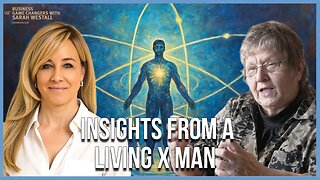Premium Only Content

The Dark Heretic Isaac Newton | Theories Of Gravity
Isaac Newton, a renowned scientist, made significant contributions to our understanding of gravity. He formulated two fundamental theories related to gravity, which revolutionized the field of physics.
Law of Universal Gravitation: Newton's first theory, known as the Law of Universal Gravitation, was published in his seminal work "Philosophiæ Naturalis Principia Mathematica" (Mathematical Principles of Natural Philosophy) in 1687. This theory states that every particle of matter attracts every other particle with a force that is directly proportional to the product of their masses and inversely proportional to the square of the distance between them. In simpler terms, it explains that any two objects in the universe exert a gravitational force on each other.
The equation representing this law is F = (G * m1 * m2) / r^2, where F is the gravitational force, G is the gravitational constant, m1 and m2 are the masses of the objects, and r is the distance between their centers.
Newton's Law of Universal Gravitation provided a mathematical framework to explain the motion of celestial bodies, such as planets orbiting the Sun. It also offered a unifying explanation for various phenomena, from the falling of objects on Earth to the tides caused by the gravitational interaction between the Moon and the Earth.
Newton's Theory of Gravity as an Action-at-a-Distance: Newton's second theory proposes that gravity acts as an instantaneous force, meaning the gravitational attraction between two objects occurs directly across the distance separating them, without any intermediary mechanism. According to this theory, the gravitational force propagates instantaneously throughout space.
Newton's idea of action-at-a-distance was considered revolutionary at the time. However, it didn't provide a mechanism to explain how gravity actually worked at a fundamental level. It wasn't until centuries later, with the advent of Einstein's theory of general relativity, that a different understanding of gravity emerged, where spacetime curvature plays a crucial role.
While Newton's theories of gravity were groundbreaking in their time and remain applicable in many practical situations, such as calculating the motion of celestial bodies, they were eventually superseded by Einstein's more comprehensive theory of general relativity. Einstein's theory provided a deeper understanding of gravity and its connection to the curvature of spacetime, especially in extreme conditions such as near massive objects or in the presence of strong gravitational fields. Nonetheless, Newton's contributions to the study of gravity are still highly influential and form the basis for classical mechanics.
-
 0:05
0:05
The Relaxation Zone
2 years ago00244=32942=24612=25117
1.61K -
 LIVE
LIVE
Badlands Media
10 hours agoDEFCON ZERQ Ep. 012: Featuring "AND WE KNOW" and a Special Guest
8,120 watching -
 2:56:36
2:56:36
TimcastIRL
4 hours agoLEAKED Memo Says NO BACK PAY For Federal Workers Amid Government Shutdown | Timcast IRL
244K142 -
 LIVE
LIVE
Inverted World Live
4 hours agoAI Robin Williams, Lab Grown Human Eggs, and Car-Sized Pumpkins | Ep. 119
712 watching -
 1:55:35
1:55:35
Turning Point USA
3 hours agoTPUSA Presents This is The Turning Point Tour LIVE with Vivek Ramaswamy!
24.2K18 -
 LIVE
LIVE
Laura Loomer
3 hours agoEP148: Remembering October 7th: Two Years Later
497 watching -
 1:35:59
1:35:59
Flyover Conservatives
22 hours agoWARNING! October 7th Unpacked and Exposed: What REALLY Happened?; GEN Z BACKS HAMAS?! - Hannah Faulkner | FOC Show
26.3K2 -
 2:46:11
2:46:11
Barry Cunningham
4 hours agoPRESIDENT TRUMP IS BRINGING THE RECKONING TO THE DEEP STATE!
38.1K31 -
 LIVE
LIVE
Drew Hernandez
2 hours agoCANDACE OWENS LEAKED CHARLIE KIRK MESSAGES CONFIRMED REAL & DEMS PUSH TO TRIGGER CIVIL WAR
1,158 watching -
 55:56
55:56
Sarah Westall
4 hours agoSuperhuman Hearing of the Matrix: Reality is Different w/ Sharry Edwards
23.6K2
